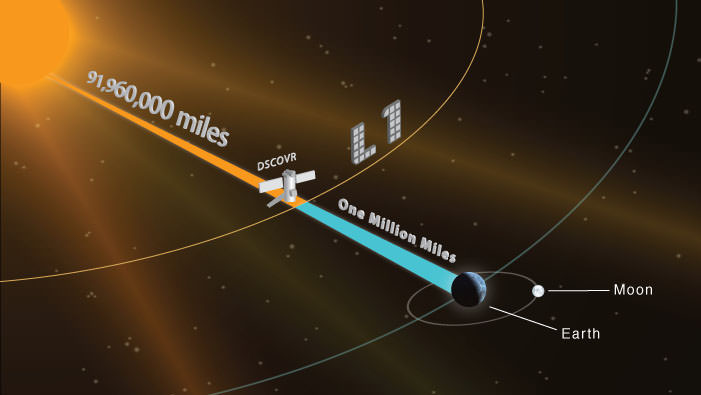Rejoice! If you’ve missed your daily fix of seeing views of our rotating Earth from space, NOAA announced that its Deep Space Climate Observatory (DSCOVR) is now back in action. The deep space satellite, which produces incredible full-disk images of our Blue Marble, has been offline since June 27, 2019 because of a problem with the spacecraft’s attitude control system. But NOAA and NASA engineers developed and uploaded a software patch to restore DSCOVR’s operations.
“Bringing DSCOVR operational again shows the unique skills and adaptability of our NOAA and NASA engineers and the care we are taking to get the maximum life from an aging asset,” said Steve Volz, assistant NOAA administrator for its Satellite and Information Service, in a statement.
A little over eight months ago, engineers placed DSCOVR into a “safe hold” because of the glitch in the system that allows for precisely positioning and orientating the spacecraft. This halted all observations.
While the imagery of our planet from DSCOVR’s Earth Polychromatic Imaging Camera (EPIC) is stunning, the gap in the spacecraft’s scientific observations was the most worrisome for scientists. From its perch at the Earth-Sun L-1 Lagrange point, 1.5 million kilometers from Earth, EPIC can monitor changes in Earth’s climate and weather patterns, from ozone and aerosols to temperature and deforestation.
DSCOVR launched and became operational in 2015. It has also been the primary satellite to gather and monitor real-time solar wind data and provides a warning system for solar magnetic storms. These solar events pose a threat to electrical grids on Earth, and in space can affect satellite operations including disrupting communication systems and the Global Positioning System navigation, so any advance warning from satellite observations is critical for the timely instigation of procedures (such as temporarily shutting down a satellite) to mitigate a solar storm’s effects.

While DSCOVR was offline, NOAA and NASA said they continued to receive space weather data from two other spacecraft, the Advanced Composition Explorer (ACE) and the Solar and Heliospheric Observatory (SOHO). NOAA weather satellites in geostationary orbit are also equipped with space weather sensors.
However, both these spacecraft are aging, and are well beyond their designed lifetimes. ACE launched in 1997 and SOHO in 1995. DSCOVR’s glitch – and the uncertainty if it could be fixed — raised concerns that NOAA would be without key data needed to forecast solar storms.
Space News reported in February that William Murtagh, program coordinator for NOAA’s Space Weather Prediction Center, commented on this issue during a February 12, 2020 Senate Commerce Committee hearing.
“Should we lose some of those key spacecraft that we talked about, I won’t say we’re blind, but we’re darn close,” said Murtagh. “It will impact our ability to support this nation’s need for space weather services.”
The current plan for replacing ACE, SOHO and ultimately DSCOVR is another satellite being developed by NOAA called the Space Weather Follow-On L-1 mission, tentatively scheduled for a 2024 launch. NOAA requested $108.1 million for the mission in its fiscal year 2021 budget proposal released in late February, up from the $64 million it received in 2020.
In the meantime, the hope is that the current fleet will keep functioning, and to that end, it’s great to see DSCOVR back in action.
See imagery from EPIC at NASA’s website. Follow @DSCOVRDaily on Twitter to see timelapse views of Earth from EPIC.

